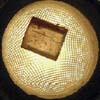| . |  |
. |
Peizhen Kathy Lu, assistant professor of materials science and engineering at Virginia Tech, has been awarded a Ralph E. Powe Junior Faculty Enhancement Award from Oak Ridge Associated Universities to advance her research to add electrical conductivity to ceramic materials by incorporating carbon nanotubes. The Powe award provides seed money of $5,000 to faculty members who are in the first two years of their tenure track as an investment in promising achievements in an important area. The institution matches the award. Ceramics, which have high strength and superior wear resistance, are used as cutting tools, energy and high-temperature materials, biomedical devices, aerospace components, and armor. The lightweight, high performance material could be even more valuable if it could be more easily processed and could conduct electricity. Lu believes she has a way to create advanced ceramic materials by incorporating carbon nanotubes. Lu works with nanopowders � particles smaller than 100 nanometers, or 100 times smaller than can be seen with the naked eye. "Such powder is very fluffy. Apparent density is only 5 percent," Lu said. "It takes tremendous force to create a component. Instead, we put the nanopowder in water and add dispersant to keep the fine particles evenly suspended and in close contact. Currently we are able to achieve 40 percent density." Materials science and engineering graduate student Chris Kessler has been working on the project since August 2004 and is characterizing the dispersant-treated ceramic suspensions and formed components. The carbon nanotubes are pure carbon structures much thinner but also much longer than the ceramic nanopowders Lu is working with. They have tensile strength 100 times that of steel but at 25 percent of the weight of steel. Lu is working with single wall carbon nanotubes and is building collaborations with Larry Allard of the High Temperature Materials Laboratory and Alex Puretzky of the Center for Nanophase Materials Sciences at Oak Ridge National Laboratory. "Oak Ridge has the expertise in creating single wall carbon nanotubes with high purity and consistent well-defined shape," Lu said. Carbon nanotubes have been well dispersed in polymers, but not in ceramic composites. Lu believes she can be successful by mixing the ceramic powders, carbon nanotubes, and a dispersant in solution, using an electrosteric process to stabilize the attraction between the tubes and particles, then freeze casting the resulting homogeneous dispersion to form a solid material. Lu is an expert in powder material processing and sintering, which is a process for bonding materials by heating them to a temperature below melting so the surfaces of adjacent particles bond. "Another advantage of our process is we can make many shapes, including quite complex shapes, without using expensive dies," she said. Lu will explore the mechanism of interaction in different solution systems with physically different nanostructures and will refine the casting and drying processes for different shapes, density, and material characteristics. The freeze-cast process has not been used with nanoscale ceramic composites and Lu looks forward to creating new knowledge about nanocomposite systems. "Our long-term goal, after we create uniform materials, is to use them as structural and functional components. The advanced ceramic materials will be able to withstand sudden temperature changes without cracking and can also be used as a thermal shock shield," she said. "An important application could be electrostatic dissipation units, which are required to safeguard such sensitive electronic components as integrated circuits, hard disk drives, and circuit boards." Related Links Virginia Tech TerraDaily Search TerraDaily Subscribe To TerraDaily Express  Nottingham, UK (SPX) May 11, 2005
Nottingham, UK (SPX) May 11, 2005Scientists at the University of Nottingham have successfully levitated diamond and some of the heaviest elements, including lead and platinum.
|
| ||||||||||
| The content herein, unless otherwise known to be public domain, are Copyright 1995-2016 - Space Media Network. All websites are published in Australia and are solely subject to Australian law and governed by Fair Use principals for news reporting and research purposes. AFP, UPI and IANS news wire stories are copyright Agence France-Presse, United Press International and Indo-Asia News Service. ESA news reports are copyright European Space Agency. All NASA sourced material is public domain. Additional copyrights may apply in whole or part to other bona fide parties. Advertising does not imply endorsement, agreement or approval of any opinions, statements or information provided by Space Media Network on any Web page published or hosted by Space Media Network. Privacy Statement All images and articles appearing on Space Media Network have been edited or digitally altered in some way. Any requests to remove copyright material will be acted upon in a timely and appropriate manner. Any attempt to extort money from Space Media Network will be ignored and reported to Australian Law Enforcement Agencies as a potential case of financial fraud involving the use of a telephonic carriage device or postal service. |